Wildlife Crossings, an Innovative Solution to Wildlife Migration Challenge in Banff
How would you feel if someone built a fence through your house or your city? Each time you had to get to the other side, you’d have to risk your life. Your spouse, kids, friends, and family would have the same choices – risk their lives or never see the other side. That’s precisely what we humans are doing across the world as we build large highways with fast-moving vehicles through wildlife habitats. On the bright side, some people are finding solutions.
Driving through Banff National Park in August 2019, I noticed bridge-like overpasses on the wide Trans-Canada Highway, with trees and shrubs growing on top! I didn’t remember seeing them on our previous trip in August of 1996. It was puzzling to see these new bridges with no roads on top. But as the days unfolded, I learned that the bridges are a brilliant and humane means to safely reconnect wildlife habitats. As my curiosities were answered, beautiful stories emerged.
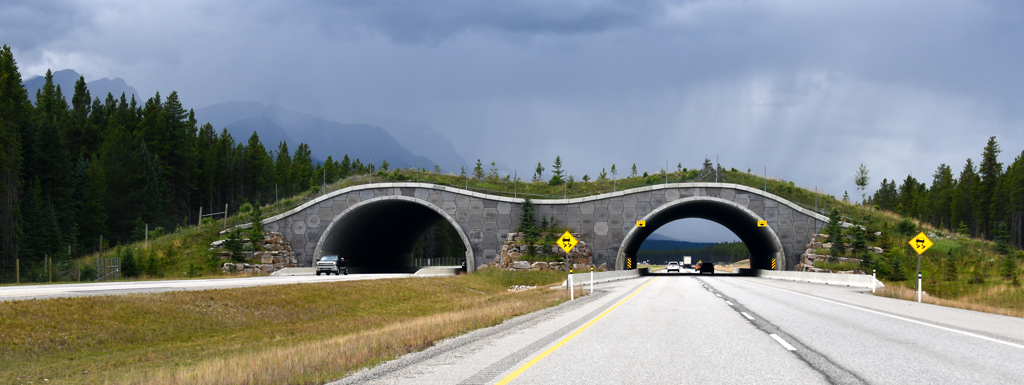
A Hairy Problem and a Smart Solution
Our guide from Pursuit’s Banff Mountains, Lakes and Waterfalls tour was saying that back in the 1960s a researcher by the name of Dr. Guerrero discovered a mating crisis in the lives of grizzly bears. He and his students were studying the grizzly bears in Banff National Park area and discovered that mating and reproductive activity was not happening! It was a crisis in the lives and population of the all-important grizzly bears of Banff National Park in Alberta, Canada! I think it was a canary in a coal mine situation.
Going back a few more decades, Trans Canada Highway (Highway 1 and 93) was built to cut across Banff and Jasper National parks and later expanded to allow for more cars and trucks to drive through the parks. Vehicles used to hit wildlife quite regularly, so fences were built all along the freeways to prevent wildlife accidents.
The project was extremely successful. It reduced wildlife fatalities by 85-96% by species and area. Unfortunately, that also meant that wildlife movement was restricted. The animals were confined to their side of the freeway. The tug of war continued. Animals applied their ingenuity and dug tunnels from under the fence, so they could go across the highway. Humans responded and made deep underground fences that the burrowing animals couldn’t cut through.
In the 1960s Dr. Guerrero and his research students continued studying the cause of declining mating habits of the grizzly bears. They discovered that the freeway cutting through Banff National park was preventing the grizzly bears from finding mates on the other side.
The findings of the studies, project to further broaden the highway and compelling arguments from the scientific community led to the construction of underpasses and overpasses for animals to safely cross the highway. The first two overpasses were very elaborate and highly decorated with beautiful rock structures. The construction cost for them was Canadian $2.2M.
The community realized that the animals didn’t care for all the decoration. They could substantially reduce the cost by simplifying the decoration while still solving the problem. So they did just that. Once all the bridges were built the blended cost was Canadian $1.1M each.
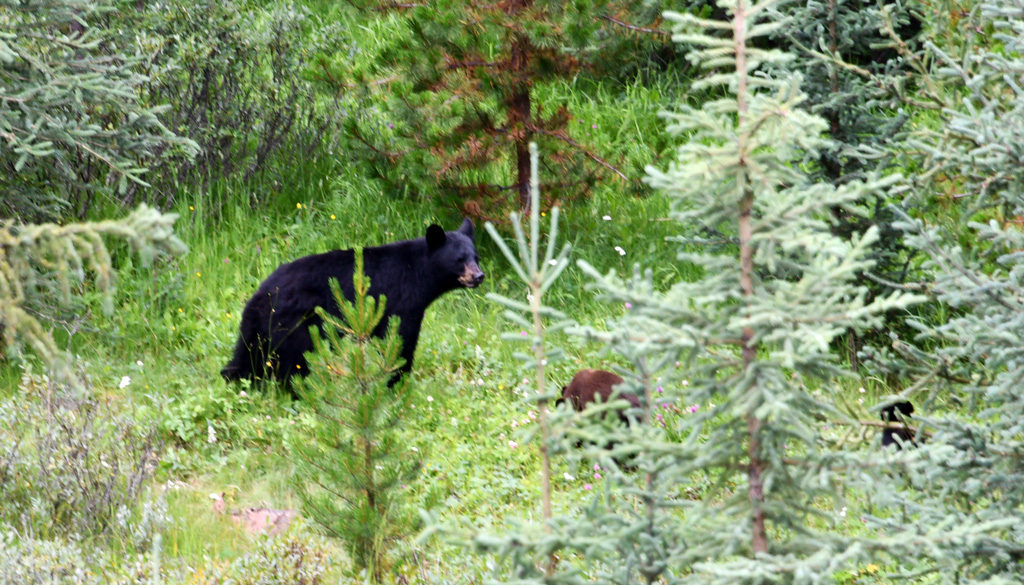
There are now 6 wildlife overpasses and 38 underpasses from Banff National Park’s east entrance to the border of Yoho National Park. Additionally, there is 1 underpass in Yoho National Park, British Columbia. That’s the highest density of wildlife crossings anywhere in the world.
While the wildlife overpasses and underpasses allow for safe passage, the underground fences prevent animals from digging tunnels. It’s an incredible success story for Parks Canada, the scientific community and the wildlife. Now, many national parks around the world are reaching out to learn from the incredible 23-year-old project and apply to their own national parks.
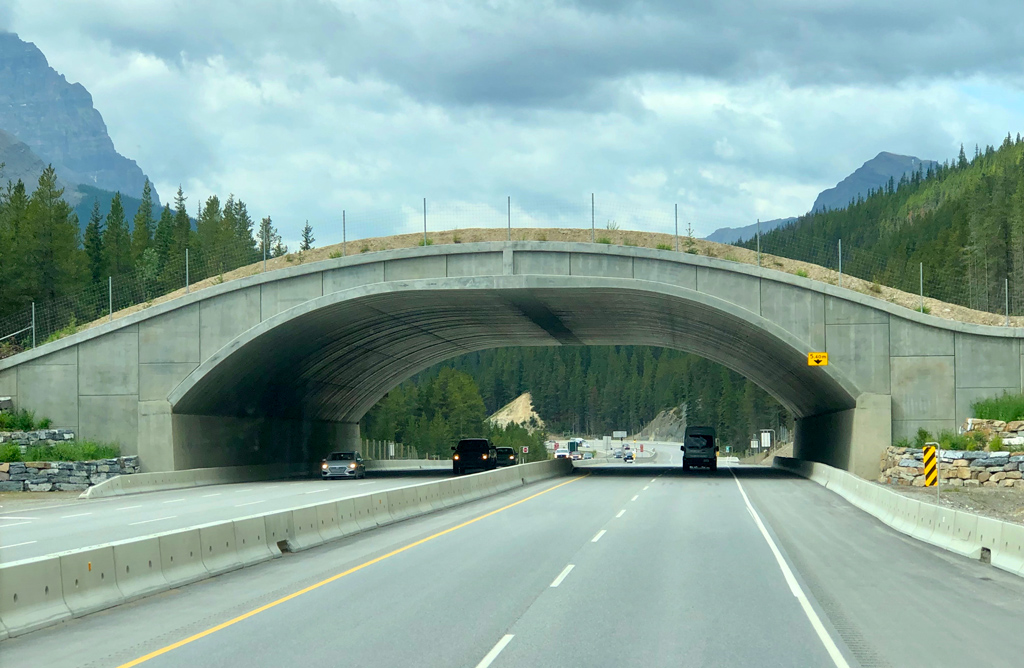
Amazing Insights from Wildlife Monitoring at Animal Crossings
With innovations in wildlife crossings, scientists could do extensive wildlife research that was not possible otherwise. Cameras were installed at the animal overpasses and underpasses. Barbed wires were installed at the access points to collect hair for DNA analysis. Using the DNA and camera data scientists have made incredible findings of the wildlife in Banff NP. For example,
- Behaviors of various species and their preferences differ quite a lot. According to Parks Canada FAQ, “Grizzly bears, wolves, elk, moose, and deer prefer crossing structures that are high, wide and short in length, while black bears and cougars tend to prefer long, low and narrow underpasses”.
- The wildlife crossings are used by many species such as grizzly bears, black bears, elk, deer, moose, red fox, hoary marmot, boreal toads, wolves, wolverines, lynx, garter snakes, beavers. coyotes, cougars, bighorn sheep, etc.
- Animals differ in their adoption of new offerings. Elks are early adopters and start using the crossings, even while they are under construction. Whereas as grizzly bears and wolves may take up to five years to feel comfortable using a new crossing.
- From the wildlife web cameras installed in the underpass, we have learned a lot about wolves. For example, an alpha female wolf regularly visited an underpass to take her family to the other side. Every time a truck passed above the underpass, she and the family were clearly distressed with the loud noise, which is particularly amplified in the tunnel. To handle the noise, the family sat down and let the truck pass before crossing the underpass.
- There are indications that the cougar population has doubled in Banff National Park since the crossings were built and aided their travels. But research continues on the long term impact of the crossings on various species.
Parks Canada and partner scientists have data on over 200K animal crossings, over 23+ years, collected from 6 overpasses and 39 underpasses. Running since 1996, Parks Canada has the longest and most comprehensive, continuous research program in the world on highway wildlife mitigations. more about it at wildlife crossings research and monitoring on Parks Canada’s website.
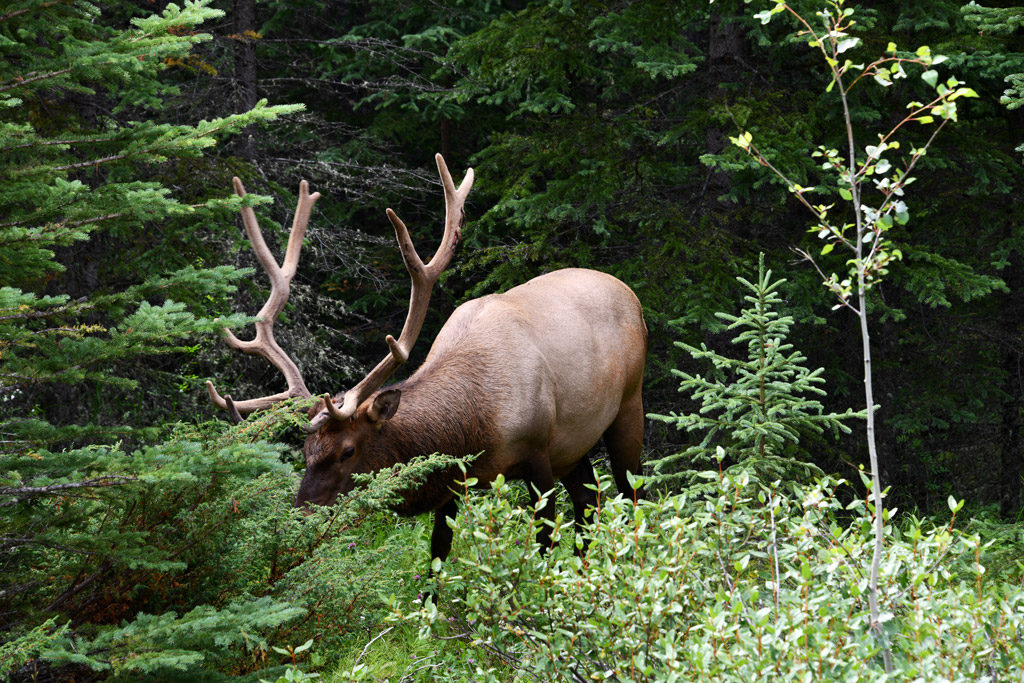
The Opposition to Wildlife Bridges
Every new idea has its opponents, so did the idea of wildlife crossings. There was much opposition in newspapers. But over time, sound research, constant communication, innovation, and publications have proven Parks Canada to be a world leader in wildlife migrations along-side Germany and other European countries.
One of the concerns was that predators would hang out by the underpass or overpass bridges to capture prey trying to get to the other side. The reality has been quite different. Animals haven’t been seen to hang out by the bridges. They use the bridge to cross over and go about their business.
Another concern was the wastage of precious tax dollars. Construction of the bridges was quite economical at about S1.1M average. The savings from collision costs far outweigh the cost of the wildlife bridges. More in the infographic below. Plus, the cost of construction is reducing with experience and innovation.
Opponents argued that the bridges will not be used by animals. I too wondered how the bridge locations were chosen such that animals would find them. It turns out that the community extensively studies animal approaches, angles, and locations so that the wildlife crossings are located at the most convenient places in the park. The community consists of scientific studies and general public volunteers that choose to participate. If I were living near Banff, I’d love to volunteer for the project.
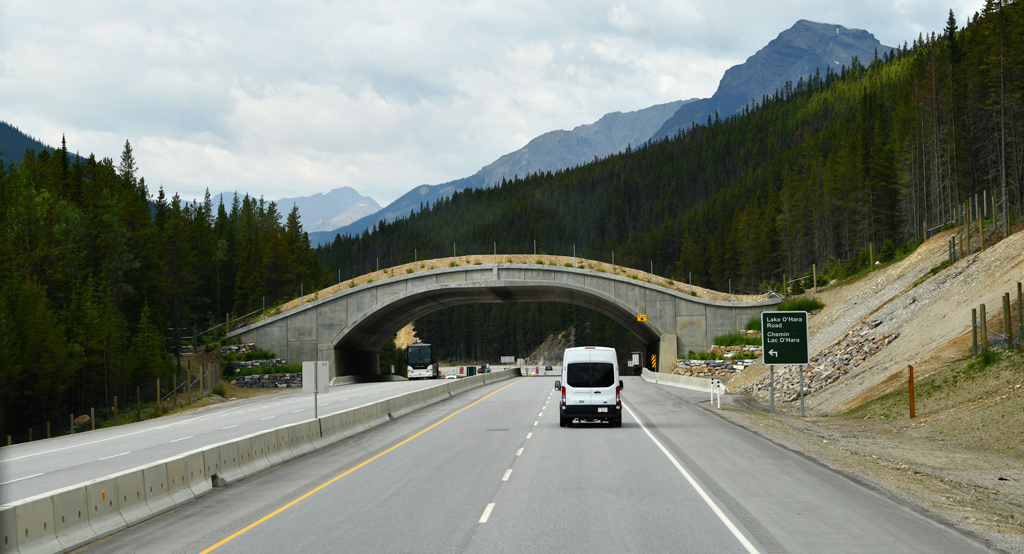
Highway Wildings Infographic
Highway Wildings created this amazing infographic in 2012 to summarize Highways & Wildlife.
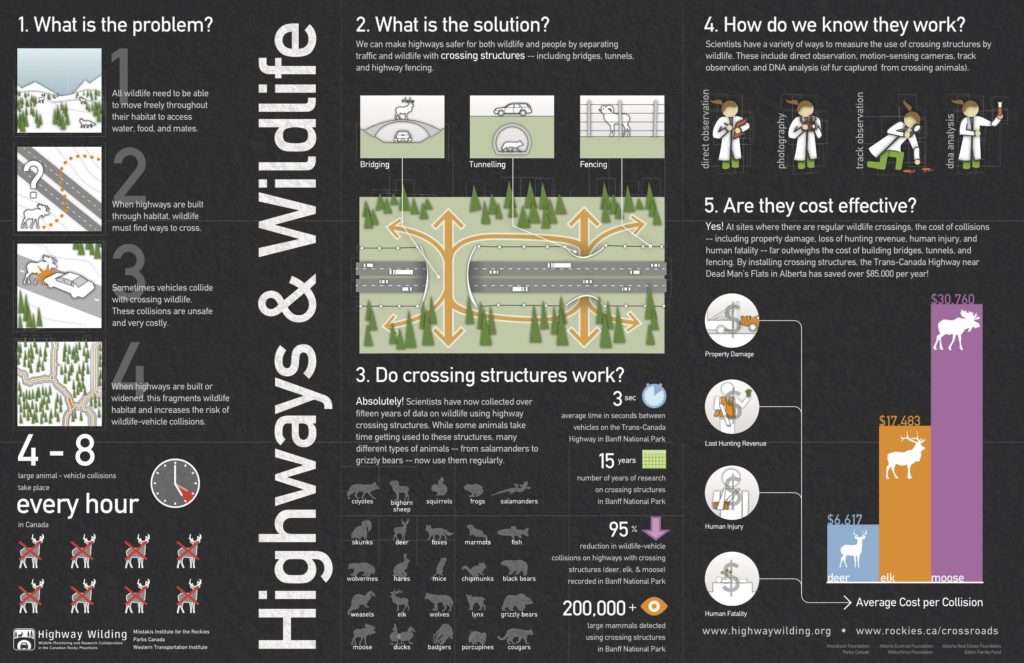
What’s Next
It’s clear that the 3-prong solution to wildlife migration challenges -> overpasses + underpasses + fences – is working. But, is the work done?
While the findings from 23+ years of groundbreaking research show clear benefits, there is no one size fits all. Like any research, more knowledge reveals more nuances and gaps in our understanding. Parks Canada and the partner organizations continue to explore, innovate, monitor and experiment. Scientific understanding has come a long way, and yet it’s just a beginning.
From everything I’ve read, organizations around the world are recognizing the necessity of doing something to preserve the planet, our wildlife, and the delicate eco-systems. I look forward to seeing more adoption of wildlife crossings and innovations in this field.
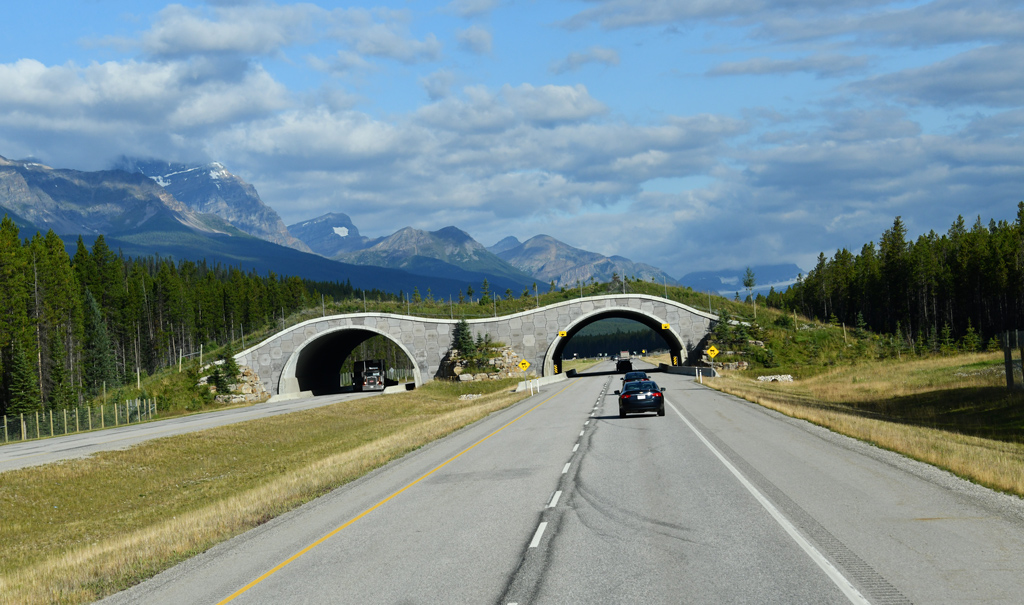
Related Articles
The Canadian Rockies
- 7-Day Itinerary of Canadian Rockies
- 3-Day Itinerary of Banff in Winter
- Itineraries of the Canadian Rockies
- Accommodations in Jasper and Banff
- Rafting in Jasper National Park
- Banff’s wildlife crossing
- Red forests in Jasper National Park
- Calgary to Banff to Jasper Drive
- Jasper to Banff Drive
- Things to do in Banff and Canmore
- Things to do in Lake Louise and Moraine Lake
- Things to do in Jasper
- Things to do on Icefields Parkway
- Things to do in Yoho National Park
The Rockies in the United States
- Colorado 6-Day Itinerary
- Rocky Mountain National Park with hikes, vista points, and itineraries.
- National Park travels during Covid Pandemic
- Pikes Peak Drive or Hike
- Outdoor rock climbing in Colorado Springs
- Glacier National Park Gallery
More for you
- Parks Canada
- Highway Wilding and their YouTube Channel
- Brewster tour
- Canada Geographic article
- Highways through habitats
- Yellowknife, Canada in Winter and Northern Lights in pictures
- Lioness crossing the road in Botswana
- Sociable weaver nests in Namib desert, an unusual structure
- Mystery of the dead impala and the leopard
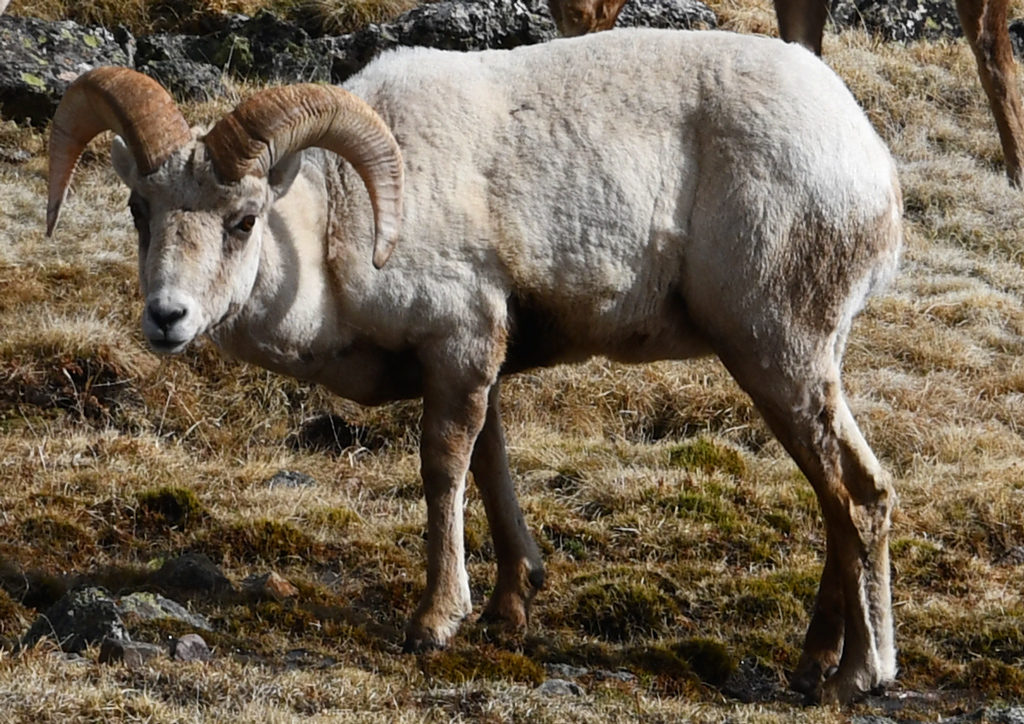

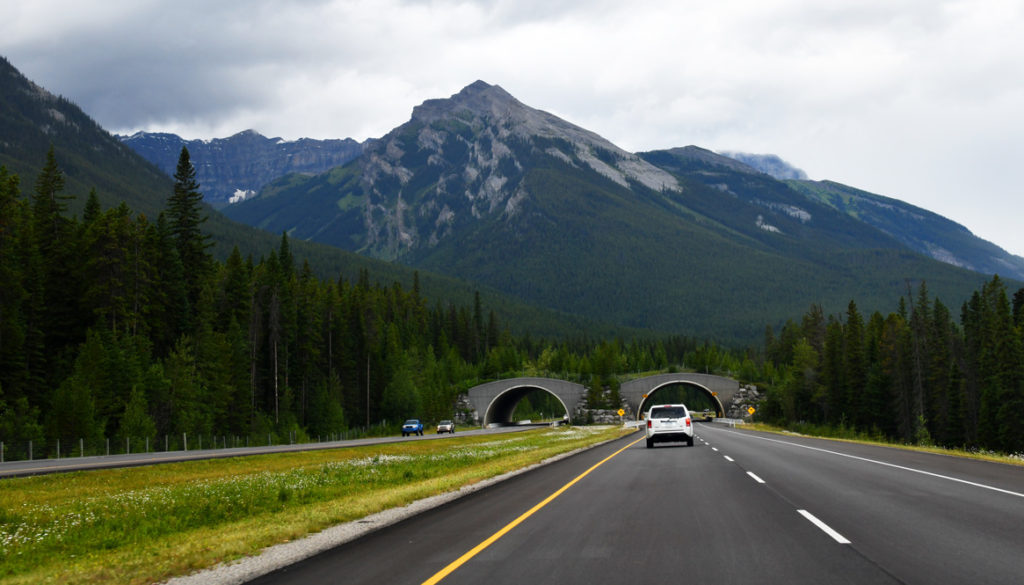
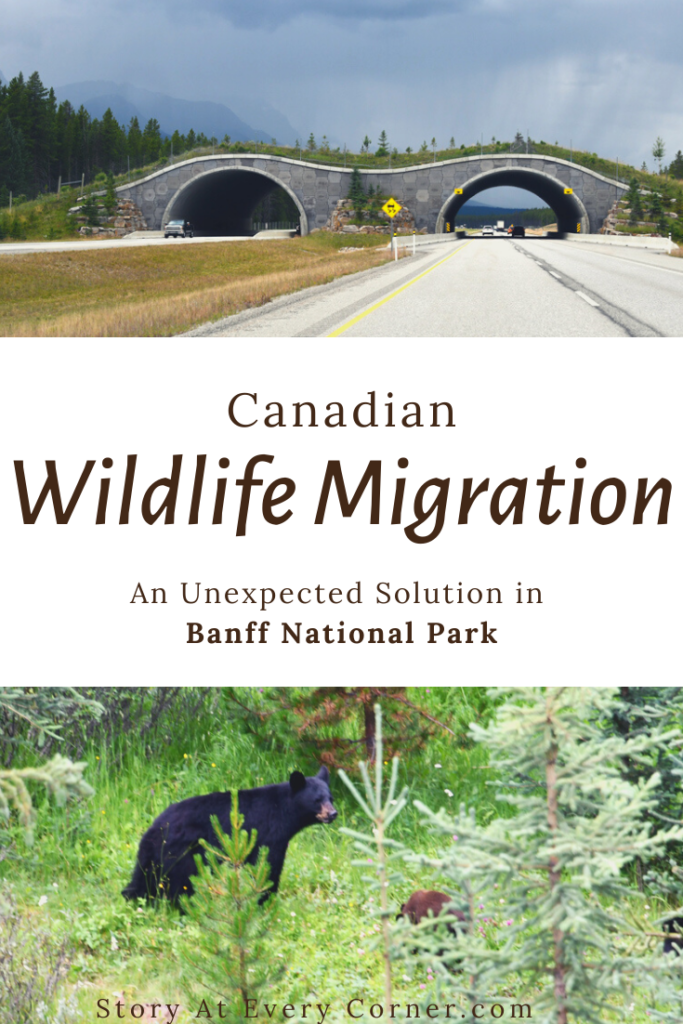
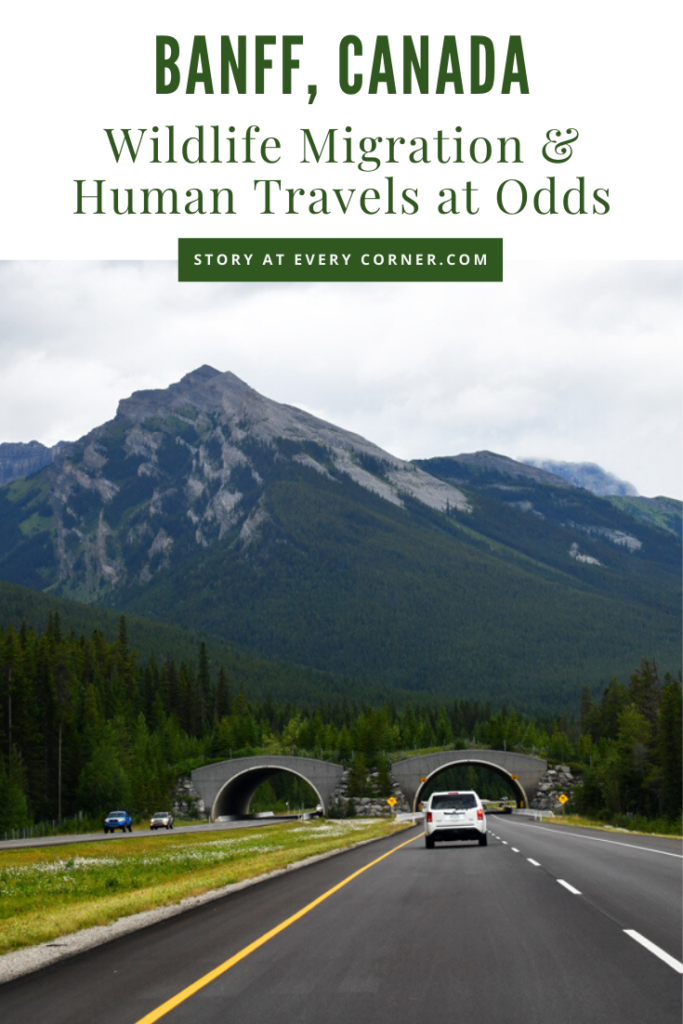
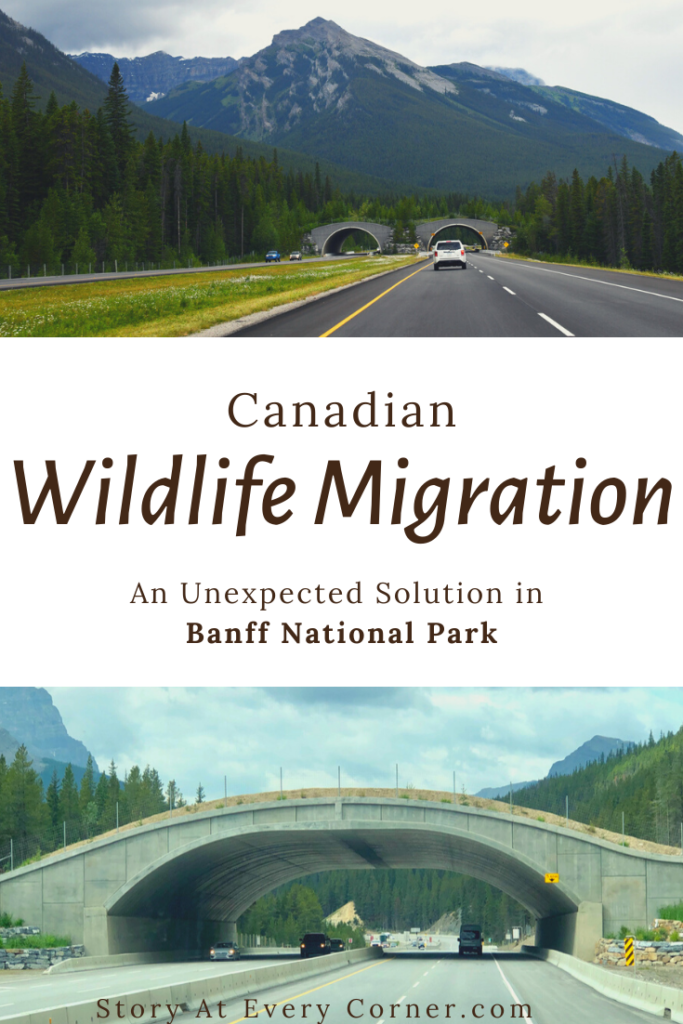
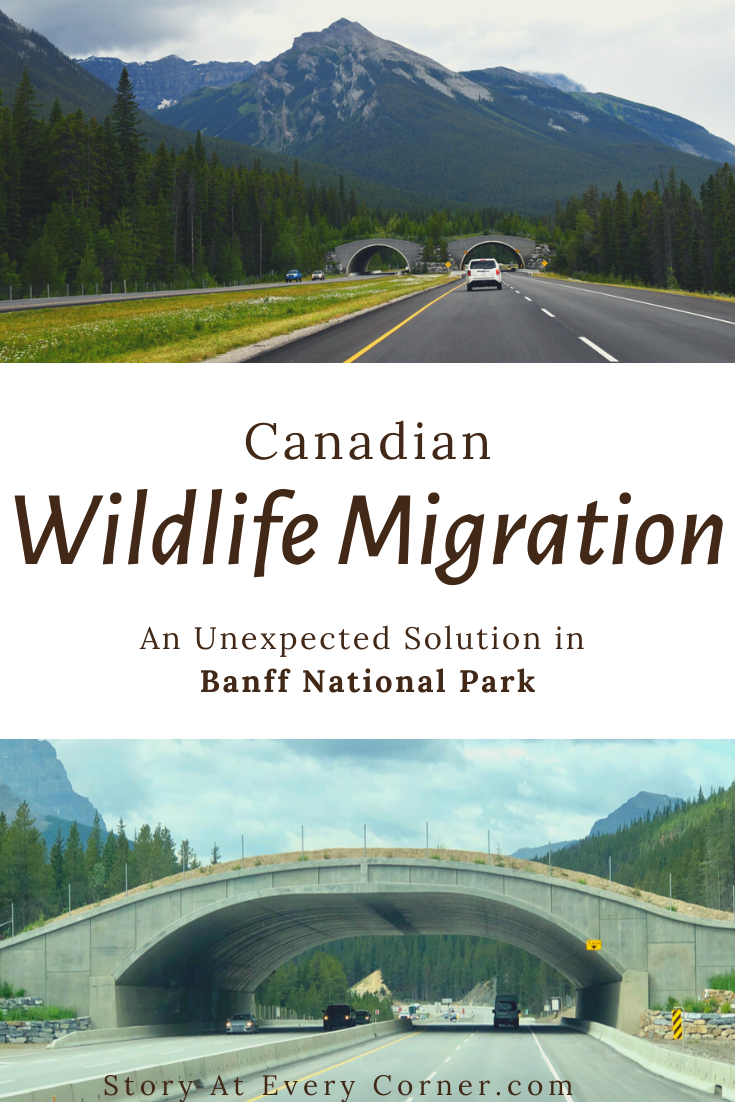
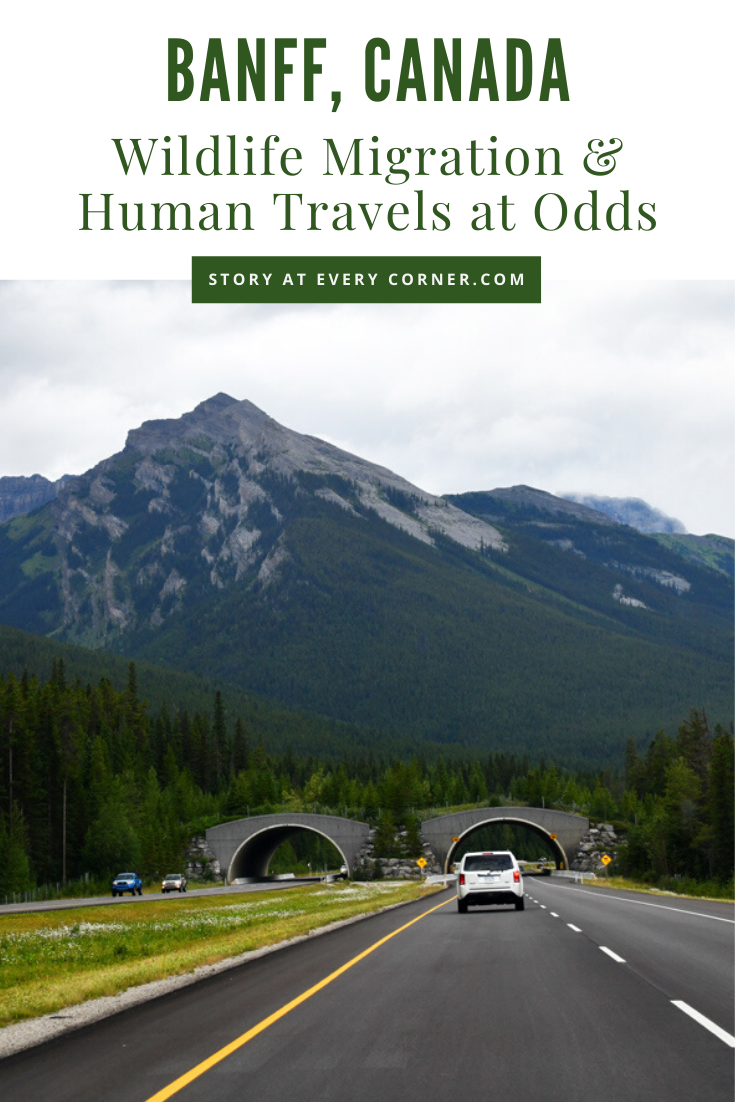
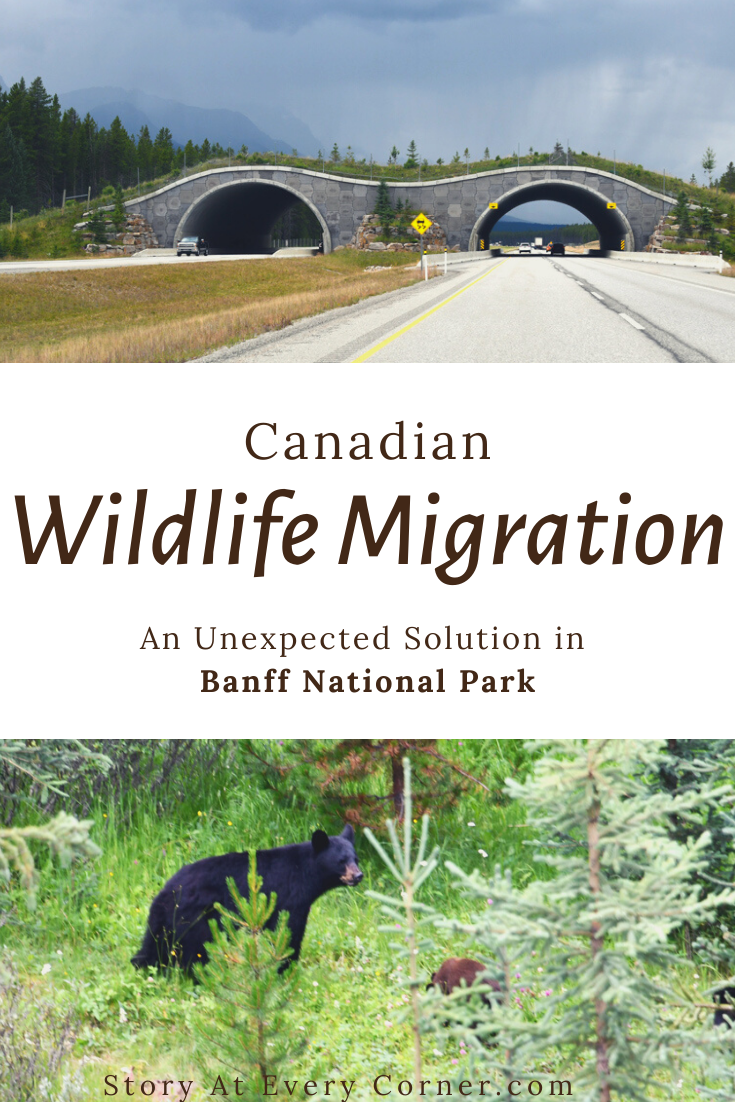
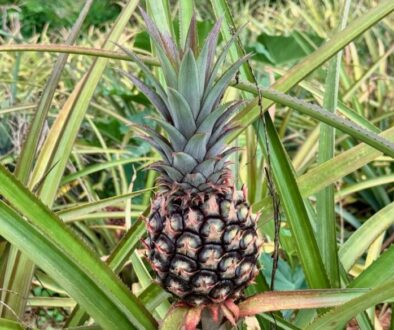



Josy A
December 6, 2019 @ 8:51 pm
Like you, I loved seeing these bridges. I had read about them, so we were actively watching out for them on our road trip to Banff. I think the mixture of them and underpasses are a fab idea, but I didn’t know about the more recent research. I had no idea Elk are early adopters!
It would be good if more places adopted something similar to help wildlife. 🙂
Jyoti
December 8, 2019 @ 6:48 am
Hi Josy, thanks so much for stopping by. How neat that you were looking for them. They came as quite a surprise to me and the stories of wildlife captured through video cameras and DNA are so fascinating.
I later found that my daughter was learning about wildlife overpasses and underpasses in school. They were learning in general about wildlife crossings around the world. It was neat to see these in real life. How cool would it be to see a bear or elk walk over it as we drive on the highway
Lisa
December 6, 2019 @ 10:04 pm
It is amazing to see the scientific research and indications that the cougar population has increased. My home country of Australia is slowly introducing wildlife overpasses. Thank you for such an informative post. Our wildlife is so important and we need to protect it.
Jyoti
December 8, 2019 @ 6:42 am
It’s so awesome to hear about wildlife overpasses coming up in Australia. Where in Australia are they being introduced? Is that a national park?
Kelly
December 6, 2019 @ 10:27 pm
What a neat solution for wildlife and people so that they can coexist together. I love this idea and am so glad that were able to implement it.
Jyoti
December 8, 2019 @ 6:40 am
It’s so cool that people are coming up with ways to humans to appreciate the natural world while preserving it and helping thrive. Wildlife crossings are a great innovation!
Chocoviv
December 6, 2019 @ 11:40 pm
This looks amazing!
Jyoti
December 8, 2019 @ 6:37 am
Thanks! It’s so cool!
Richa
December 7, 2019 @ 9:54 am
I felt the same exact way when I saw these animal crossings in Banff & Jasper, it’s genius. But I didn’t know the history of it in depth so thanks for sharing it in this post. Loved reading every bit of it! 🙂
Jyoti
December 8, 2019 @ 6:39 am
Hi Richa, thanks for stopping by. I’m glad you enjoyed reading about the wild crossings in Banff. These exist in Europe and around the world. As I learn about them I’ll share.